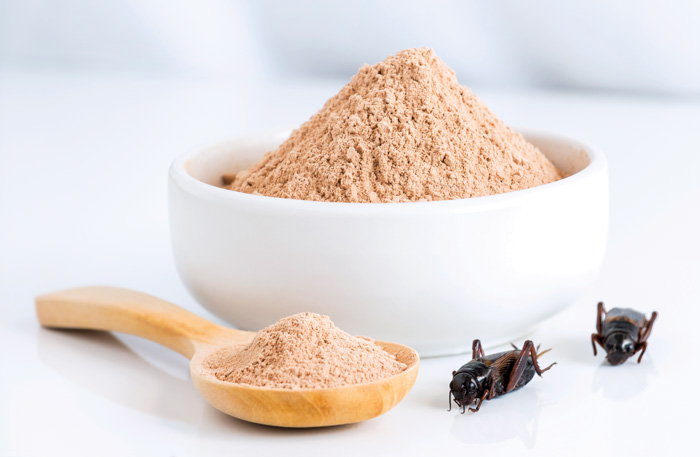Alt-Proteins: A Promising Future
Processing | APPLIED SCIENCE
Traditionally, animal proteins have been the main source of protein in the human diet. However, environmental sustainability concerns associated with animal-based diets are growing. In a recent analysis, the highest percentage of greenhouse gas emissions per 100 g of protein are associated with the production of animal meat, including beef, prawns, lamb, and pork, respectively (Poore and Nemecek 2018). According to a report by the University of Oxford, switching to alternative protein sources can save 8 Gt CO2 eq per year and reduce land use demands (Collett et al. 2021).
Consumers are paying attention, as well. In a recent survey conducted by the HSG FoodTech Lab at The University of St. Gallen, 54% of consumers indicated they are willing to replace meat with alternative protein sources. Wageningen University scientists also have reported that the drivers of widespread adoption of alternative protein sources are primarily product-related, including taste, convenience, environmental benefits, appearance, and healthiness (Onwezen et al. 2021). As demand grows for alt-proteins, food science and technology solutions will play a critical role in enhancing protein and associated product properties that can lead to increased options for consumers looking to diversify their diets or take a flexitarian approach to protein intake. Accordingly, the food industry is responding to the demand by modifying product formulations and utilizing several food processing technologies to produce sustainable alt-protein products, despite some commercialization challenges.
Plant-Based and Algal Proteins
Plant-based proteins are most widely used to produce meat analogues. The sources include oilseeds such as soybeans, peanut, and linseed; pulses such as beans, lentils, and lupines; cereals such as wheat, corn, rice, and oats; and leaf proteins such as alfalfa, sugar beet, and clovers. For example, Impossible Burger utilizes protein from soy, whereas Beyond Meat incorporates peas, mung beans, and brown rice as protein sources.
Traditional wet and dry fractionation technologies are applied to obtain protein constituents. The wet fractionation method involves the use of organic solvents, acid, and alkali solutions to remove non-protein fractions and increase purity; however, this approach often causes high protein denaturation, water, and energy use. Dry fractionation, on the other hand, involves fine milling, separation, and air classification, a milder treatment that generally yields lower protein purities while retaining the functionalities of protein. Both techniques aim to improve the quality of the extracted proteins via hybrid approaches, whether leveraging the benefits of both approaches or applying emerging processing technologies such as microwave, ohmic heating, ultrasound, enzymatic processes, or high pressure processing (HPP) (Sa et al. 2022). HPP is the most explored alternative approach in the recovery of proteins and bioactive compounds. Additional technologies focusing on process sustainability have also been commercialized. For example, Gavan Technologies based in Israel has developed a protein extraction method utilizing all parts of the plants with a zero-waste approach.
Algal proteins are sourced from microalgae or single-cell microorganisms containing up to 70% proteins from species such as chlorella or spirulina. The processing technologies involve the aquatic cultivation of algae, followed by drying, blending, and binding. Protein extraction has been performed through aqueous, acid, and alkali treatments, followed by centrifugal and separation methods such as ultrafiltration, precipitation, and chromatography. Several industrial applications, such as animal and aquaculture feed, exploit lectins and phycobiliproteins from algae. The technological challenges associated with algal proteins include off-flavors, lower digestibility due to the wall structure of the cells, and high manufacturing costs, most notably those related to the isolation of protein from algal biomass (Bleakley and Hayes 2017).
Insects as Protein Sources
Insects such as crickets, beetles, caterpillars, grasshoppers, and termites offer a sustainable high quality protein source, providing protein content ranging from 20%–75%. This renders insect use suitable for protein production, which is typically performed in controlled environment cultivation farms. Protein extraction from edible insects can be achieved by alkaline and acid treatments or by using combination technologies such as ultrasound-assisted extraction, dry fractionation, or enzymatic hydrolysis for peptide production. High lipid composition (8%–50%) interferes with the protein extraction yields, so defatting techniques such as solvent-based, supercritical CO2, and ultrasound-assisted extraction have been employed (Choi et al. 2017). Currently, industrial protein extraction from insects is not cost-efficient. Despite the high quality and protein conversion properties, low acceptance levels and costs continue to constrain a wider adoption of insects and insect-sourced proteins.
Fermentation-Based Methods
Fermentation approaches, which cultivate bacteria, yeasts, and molds to produce proteins and nutritional compounds and flavors, have recently gained momentum. Protein production techniques involve microbial, biomass, and precision fermentation methods. Traditional microbial fermentation methods have been in practice for centuries in tempeh, cheese, vinegar, and yogurt production. Biomass fermentation, on the other hand, is used to proliferate microorganisms themselves for use as high-protein products through solid-state fermentation or submerged fermentation techniques. For example, Nature’s Fynd protein patties are produced by the fermentation of Fusarium.
Precision fermentation is achieved by adjusting metabolic pathways such as gene sequencing, high-throughput library screening, and multiomics to optimize microbial strains and protein yields and to scale up approaches through the utilization of yeasts, molds, and fungi. The precision fermentation technique is used to produce dairy proteins from Remilk and Formo, casein from Perfect Day, egg white from Clara Foods, and collagen from Geltor, for example. The method provides higher efficiencies, high-value products, and the ability to adapt existing fermentation methods for increased health benefits and flavor compounds. However, regulatory approval remains the major challenge to commercial use (Chai et al. 2022).
Cultured Meat
Cultured meat, as part of the cellular agriculture concept, utilizes tissue engineering approaches by cultivating the stem cells of the animals with nutrient-rich feedstocks in vitro. The production systems use either a self-organizing technique in which transferred muscle produces highly structured tissues, or a scaffolding technique in which cells are grown in scaffolds to form unstructured, soft-end products. Currently, most of the research and funding focus is on developing cultured beef, seafood, and pork. Despite significant efforts, several issues have limited cell-based meat production at scale, including growth media concerns, the availability of effective technologies to produce alternatives that mimic traditional meat products, and biomaterial selections failing to perform efficiently in bioreactors.
A Promising and Sustainable Future
For alternative protein sources to be mainstream, consumer acceptance must be achieved. The Wageningen University research by Onwezen and colleagues shows consumers generally have lower acceptance levels for alternative protein sources. According to the study, the factors that affect acceptance include willingness to pay, intent to purchase, and self-reported behaviors associated with the product-related attributes such as taste, perceived health benefits and psychological factors, as well as external attributes such as trust and social environment. The study notes that among alternative protein sources, insects had the lowest acceptance scores followed by cultured meat, while plant-based meat substitutes had the highest scores.
Challenges in upstream and downstream processing, specifically related to obtaining the desired functionality, quality, and composition of proteins, good performance of existing product formulations, and additional costs, pose major technological barriers. Despite the demonstrated benefits of environmental sustainability, several uncertainties exist around the emissions and added energy requirements associated with novel protein production methods.
Since consumers usually do not know the potential health or environmental benefits, the industry may be prone to greenwashing and making unsupported health benefit claims. For this reason, heuristics surrounding the alternative protein space need to be carefully analyzed. While ontological competition among alternative proteins and livestock stakeholders continues, the meaning ascribed to “good” vs. “bad” protein requires a careful examination. University of Oxford researchers analyzed the narratives around animal-based protein substitutes and found the emergence of “real vs. fake,” and “clean vs. dirty” similar to heuristics shaping “good vs. bad food” debates (Sexton et al. 2019).
The success of the alternative protein movement will depend also on the price point of the end products. According to a September 2022 Deloitte study conducted with 2,054 U.S. consumers, the plant-based product growth rate has decreased due to supply chain issues, which has led to higher prices, health benefit questions on the part of consumers, and market segment saturation. Regardless, diversification of diets and dietary options is promising, not only for the food industry and the potential business benefits but also for the development of more sustainable food systems.
Learning Objectives
- Understand the sustainability and economic aspects of alternative protein types and sources.
- Learn about widely used alternative proteins and technological pathways to their production.
- Discover the barriers against the widespread adoption of novel protein sources.




